TIDT205 February 2021
3.3 Load Regulation
Load regulation data was extracted from the efficiency measurements.
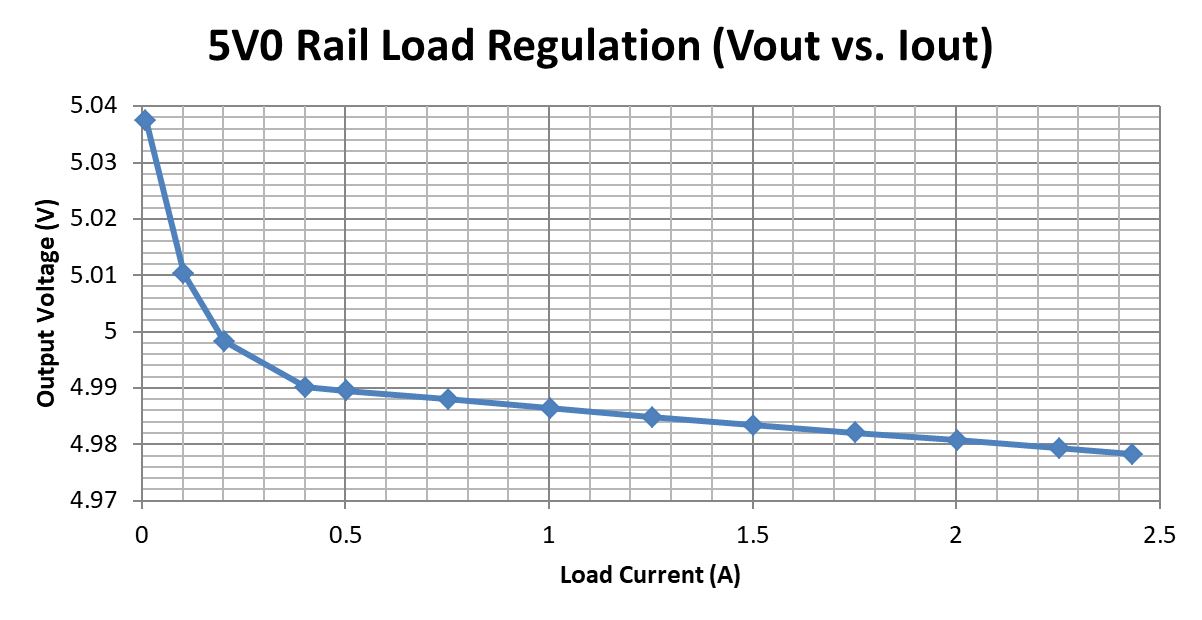
The output voltage is regulated
to within 0.76% of the nominal 5 V.
Figure 3-6 Output Voltage vs IOUT (5-V Output). 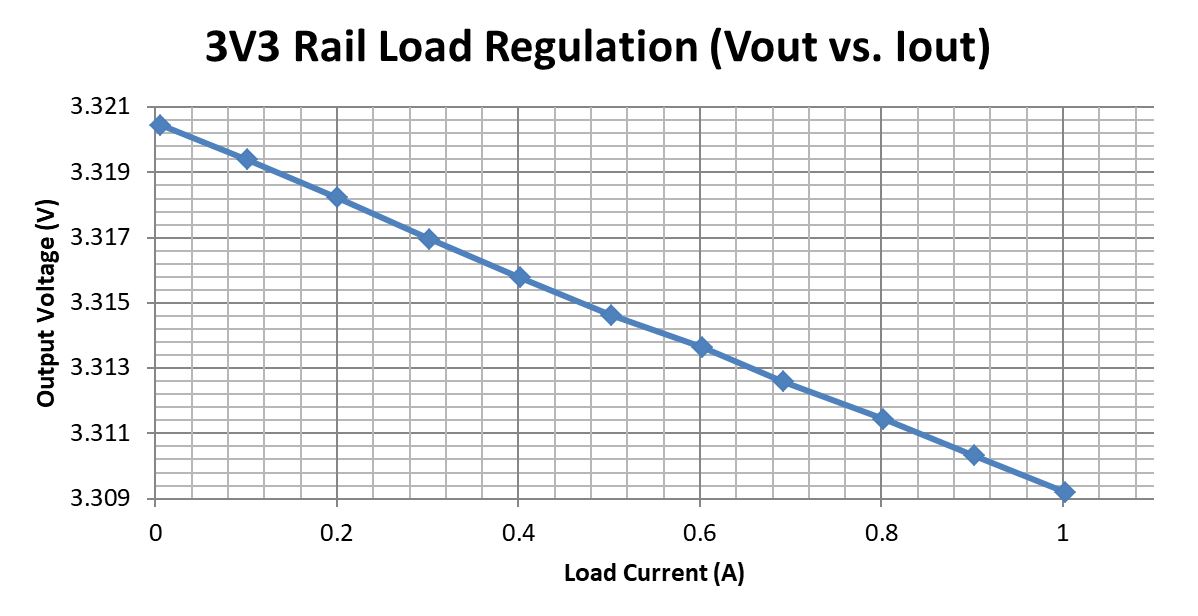
The output voltage is regulated
to within 0.62% of the nominal 3.3 V.
Figure 3-7 Output Voltage vs IOUT (3.3-V Output). 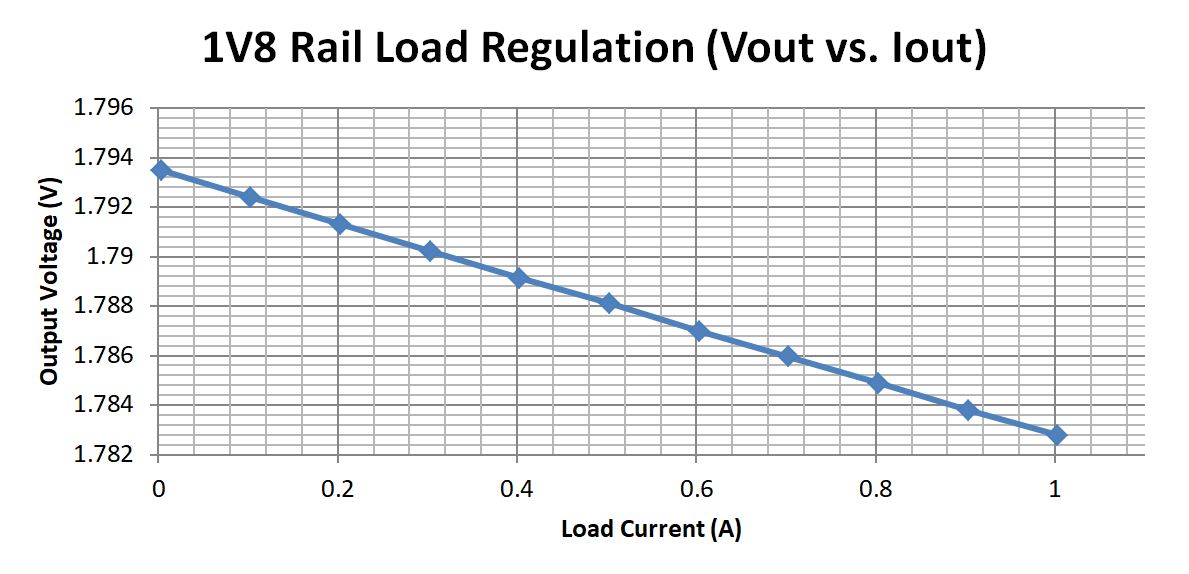
The output voltage is regulated
to within 0.96% of the nominal 1.8 V.
Figure 3-8 Output Voltage vs IOUT (1.8-V Output). 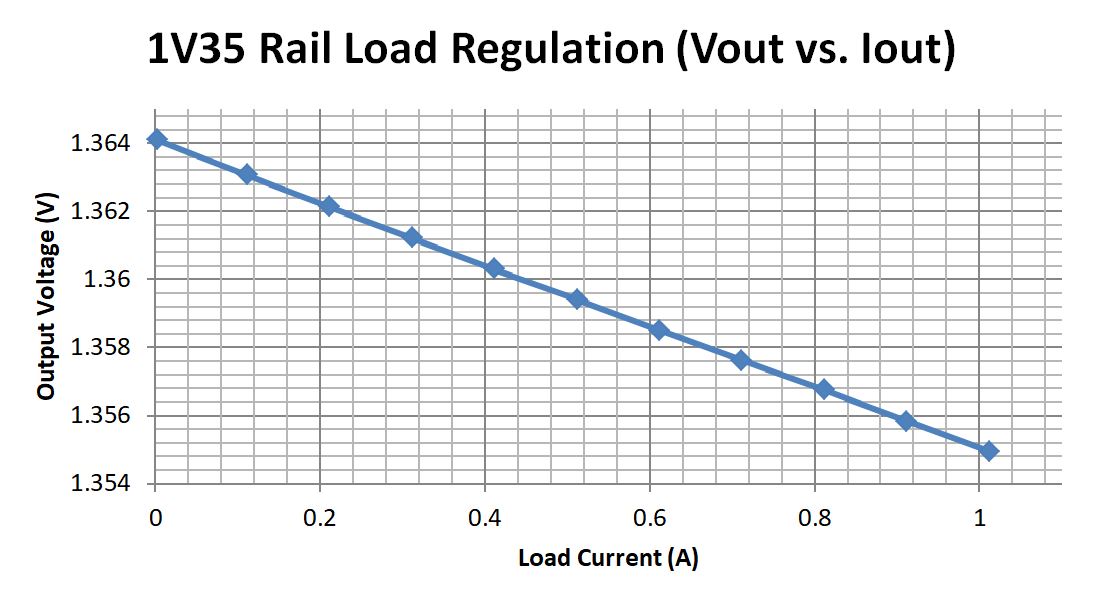
The output voltage is regulated
to within 1.04% of the nominal 1.35 V.
Figure 3-9 Output Voltage vs IOUT (1.35-V Output). 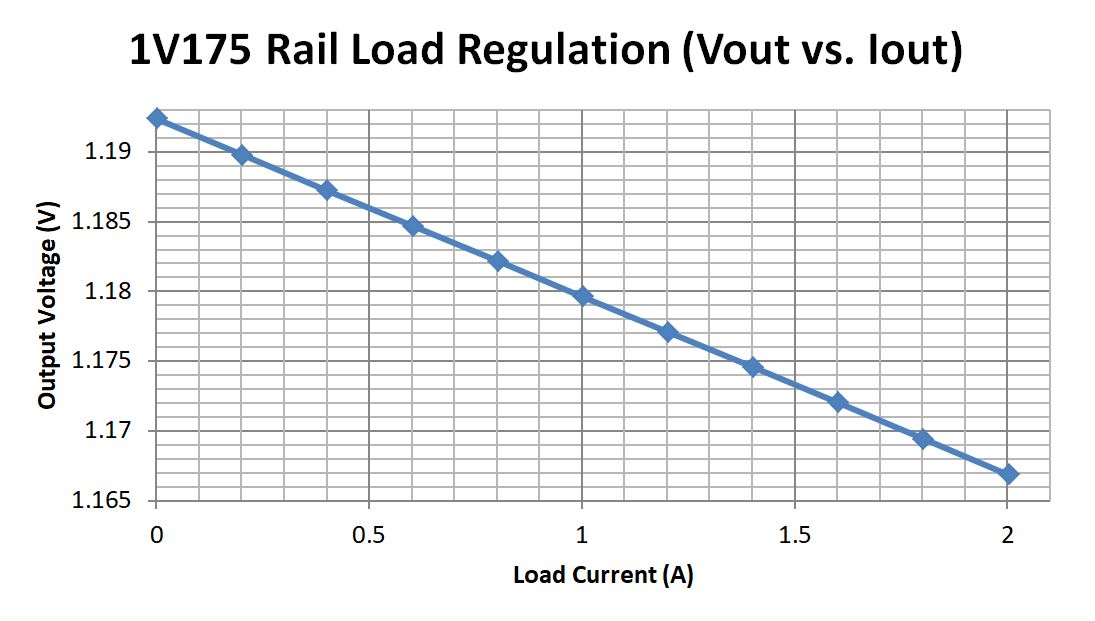
The output voltage is regulated
to within 1.48% of the nominal 1.175 V.
Figure 3-10 Output Voltage vs. IOUT (1.175-V
Output).